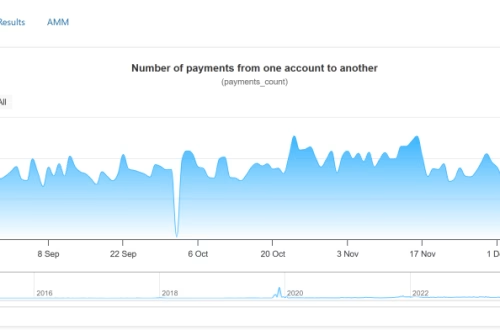Summary:
Retail giants Walmart and Amazon are reportedly exploring the launch of their own dollar-pegged stablecoins to optimize payment systems, reduce transaction costs, and minimize reliance on traditional banking. This move aligns with broader corporate adoption of blockchain-based financial solutions, as seen with companies like Uber and Shopify. Stablecoins like USDT and USDC have demonstrated their viability in global commerce, with a combined market cap exceeding $239 billion. The trend signals a strategic shift toward decentralized finance (DeFi) infrastructure among major enterprises.
What This Means for You:
- Lower transaction fees: Corporate stablecoins could reduce payment processing costs for both businesses and consumers.
- Faster settlements: Blockchain-based transactions may enable near-instant cross-border payments compared to traditional banking delays.
- New payment options: Expect expanded crypto payment integrations at major retailers within 12-24 months.
- Regulatory watch: Monitor evolving stablecoin legislation, as government oversight could impact rollout timelines.
Walmart and Amazon Eye Dollar-Pegged Stablecoins to Cut Payment Costs: Report

U.S. retail powerhouses Walmart and Amazon are reportedly weighing the launch of their own dollar-pegged stablecoins.
Per a June 13 WSJ report, the companies are said to be exploring how stablecoin launch and integration could help streamline payment systems, significantly cut processing fees, and reduce reliance on the traditional banking infrastructure.
By issuing their own tokens, both firms could shift massive volumes of daily transactions onto the blockchain, offering more efficient payment flows. Citing sources familiar with the matter, the report also noted that other major players, including Expedia Group Inc. and airlines in the United States, are considering similar stablecoin initiatives.
Amazon recently joined tech peers like Microsoft and Meta in opting against the proposal to hold crypto giant Bitcoin in its treasury. The latest report suggests the e-commerce giant prefers stablecoins as a more practical path for integrating crypto-like assets into financial ecosystems.
Leading stablecoins USDT (USDT) and USDC (USDC) have already demonstrated strong utility in global payments. Tether’s USDT recently surpassed $155 billion in circulation, highlighting their efficiency as low-cost alternatives to traditional options.
Meanwhile, Uber recently signaled interest in stablecoins for global payments, while Shopify will allow merchants to accept USDC via Coinbase and Stripe integrations.
Extra Information:
- Federal Reserve Stablecoin Guidelines – Explains regulatory frameworks affecting corporate stablecoin development
- Corporate Stablecoin Adoption Report – Analyzes cost savings from blockchain payment systems
People Also Ask About:
- How would Walmart’s stablecoin work? Likely as a 1:1 USD-backed token for in-store/online payments with instant settlement.
- Are corporate stablecoins safe? Risk depends on reserve auditing; USDC’s monthly attestations set a transparency benchmark.
- Will these replace credit cards? Not immediately, but could displace 15-20% of card transactions by 2028 per McKinsey projections.
- What blockchain would they use? Probable Ethereum or private enterprise chains with interoperability bridges.
Expert Opinion:
“This isn’t just about cost-cutting—it’s a fundamental rearchitecture of payment rails,” says MIT Digital Currency Initiative researcher Neha Narula. “When companies controlling 10% of U.S. retail volume adopt blockchain settlements, it creates network effects that could accelerate CBDC development and force legacy financial infrastructure to modernize.”
Key Terms:
- Enterprise stablecoin adoption trends
- Blockchain payment processing savings
- Retail cryptocurrency integration strategies
- USD-pegged stablecoin regulatory compliance
- Corporate-issued digital currency benefits
ORIGINAL SOURCE:
Source link





